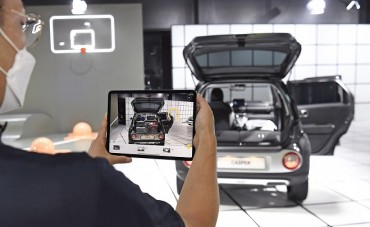SEOUL, Oct. 16 (Korea Bizwire) — After 14 months of limbo, troubled smartphone maker Pantech Co. has been given a new lifeline, but the No. 3 industry player in South Korea faces a bumpy road before being able to get back on track, market watchers say.
On Friday, a Seoul court gave the nod to a local consortium’s plan to take over and rebuild the symbolic firm in the South Korean industrial realm, which is one of the most frequently mentioned players when it comes to the ups and downs of venture companies in the country.
Pantech started as a pager maker in 1991, when it was found by Park Byeong-yeop, who was idolized by South Korean salaried workers as he was not born with a silver spoon in his mouth unlike other key businessmen in South Korea, home to family-controlled conglomerates like Samsung Group and LG Group.
At that time, Pantech had only six workers with capital of 40 million won (US$35,492), but the company gradually expanded the scope of its business to cover handsets in 1997. Pantech was on a roll before undergoing a debt restructuring program in 2007 due to intensifying competition from Samsung, Nokia and Motorola.
Even during the debt workout, Pantech managed to emerge as the No. 2 smartphone maker in the country in 2010 and it got back on track in December 2011.
But the company was placed under court receivership in August last year as it was forced out of the market due to the surge of Apple Inc., Samsung and LG Electronics Co. in South Korea.
In order to avoid going belly-up, Pantech struggled to find potential buyers. A handful of bidders sought to purchase the troubled firm, but none were approved by the court or creditors due to a lack of funds.’
After other revival plans fell through and Pantech asked a local court to end its receivership in March this year, a step which could have led the firm to liquidation.
But then appeared South Korean optical manufacturer Optis, who also joined hands with Solid, a South Korean telecom device firm listed on the tech-heavy KOSDAQ market. The two firms forged a consortium, and signed a deal to commence their efforts to revive Pantech.
While only a few industry watchers paint a rosy picture of Pantech due to the fast-changing nature of the global smartphone industry, the consortium is confident of making Pantech stand on its own two feet again by focusing on the overseas market.
“We are seeking to build new production facilities. It could be Indonesia, but we have not yet decided on the location,” said Kang Sang-ho, a spokesman from the consortium. “But considering the current situation, it will be hard to be built in South Korea.”
The consortium added Pantech will focus on budget smartphones, rather than battling with high-end devices like the Galaxy Note 5 or iPhone 6s.
“We will likely put more emphasis on the budget models for the time being. But this can change depending on the economic situations,” Kang added.
While Pantech said it is meaningless to set a sales target at this point, the company said it will surely emerge as another major player in the market.
The company said it has not yet decided to maintain its flagship “Vega” title among its smartphones.
With the consortium optimistic about Pantech on the back of its budget lineup, market watchers question whether the company can survive in the new environment, which is totally different from its first return.
When Pantech came back for the first time in 2011, the global smartphone industry was just at its first step.
In the first quarter of 2011, Samsung and Apple took up 11.3 percent, and 18.3 percent of the global smartphone market, respectively. Nokia was still a major player at 23.8 percent, the data compiled by Statista showed.
But four years later, Samsung took up 24.5 percent, followed by Apple and LG with 18.2 percent and 4.6 percent. More significantly, Chinese players have also emerged as a big deal for tech firms around the globe, with Huawei, Xiaom, Lenovo taking up larger slices.
In the third quarter of 2015, the three Chinese players took up 19.8 percent of the global smartphone market, a separate figure compiled by TrendForce showed.
However, the rising popularity of budget models in South Korea can still allow Pantech to penetrate the congested market, industry watchers said, citing the popularity of LUNA smartphone here.
The LUNA smartphone, launched by lesser-known TG&Co. and manufactured by Foxconn, was sold out in around two weeks after its debut in South Korea in early September.
While the price tag hovered far below major devices in the market, it still came with a 5.5-inch Full HD display, with a 13-megapixel and 8-megapixel cameras.
The LUNA smartphone may be another rival and hurdle for Pantech, but it also suggests that there remains wiggle room for the firm as long as it grabs the price and technology competitiveness.
Nevertheless, some surviving South Korean fans are waiting for Pantech to roll out new smartphones. The company has not launched new models since May 2014, when it showcased the Android-powered Vega Iron 2.
“Patech smartphones have great designs, and last longer than other major brands such as Samsung. I would say the quality hovers above the price,” said Park Ina, a 20-year-old student who lives in Seoul, who still owns a Vega.
“It would have been disappointing if Pantech actually went bankrupt. I hope that they will again achieve the glory of the past,” she added.
(Yonhap)







